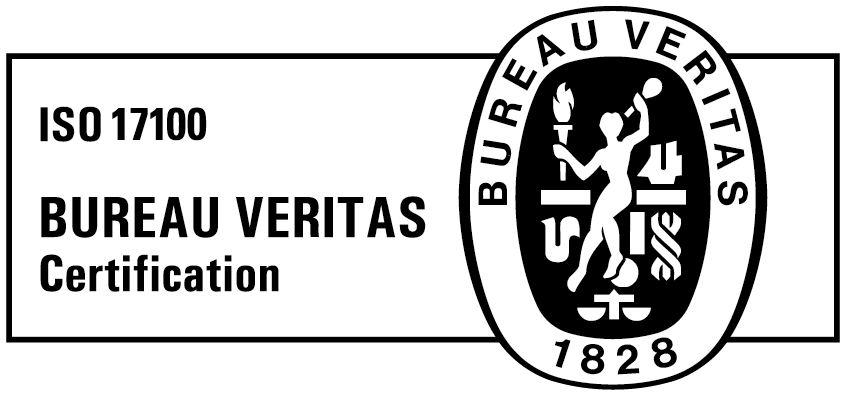We can start with the fact that you’ve already put your mind into growth mode, meaning you are open for new opportunities for both success and risks that come hand in hand on this journey.
That’s why it is so important to set your goals and strategy in advance.
Otherwise, you could become a what-not-to-do-when-going-global example of a company. But we want the opposite.
We understand your struggle with the very beginning of taking your company international and putting it into new language dimensions; we’ve been there as well.
That’s why we’ve prepared an easy-to-follow guide to reduce your efforts.
1. What is the current standing point of your business?
First, you have to thoroughly analyse your company’s current status. Include the whole staff, not only your analytical and marketing team. Every internal insight is as valuable as a consumer’s point of view because staff comprehends how the company breathes in a wholesome way – they know what lacks, what is right, and what is redundant.
Obtained information should be then combined with the information you’ve managed to acquire through e.g. data analysis, customer surveys. We recommend you to pay special attention to clients that especially add up to your retention rates because they highlight the parts of your strategy that simply nails it. This could be some sort of a foundation for your further development of ideas.

Then ask yourself the following question: does your product or service already have the potential to satisfy consumers on a global scale?
According to the Harvard Business Review, it all starts with your company’s name. It’s not just the brand image it conveys; take into account the pronunciation and the letters it’s composed of as well because not all of them are necessarily existent in all foreign alphabets.
You also might face the need for rebranding. This doesn’t mean you have to start all over, but just that you have to create a different image of your global company for a different global market niche. In the 5th-point section, we will introduce you to a sucessful case of a global company.
2. Foreign market research - become an insider
One of the essential things you have to do is to show your future clients you’re passionate about them. You should help them realise they have an issue, which is solvable – with the help of your company’s product or service.
Therefore you have to get to know them and understand them – you can do everything from conducting interviews and surveys to going through online analytical data available to your analytical team. In order to get to an effective data crunching, you need to gather as much information as possible. This process will eventually become the source of your prospective guidelines.

It would be of great use if you can obtain some insider information regarding the culture of your target audience. Equally important, if not even more, would be to check the regulations and double-check if your branding might cause you brand blunder in any of the desired markets. This point deserves an emphasis on the localization, which isn’t the same as translation. See here what’s the difference between them.
What shouldn’t be neglected as well is SEO. You won’t reach the top of certain search engine results with the same SEO all around the globe because not all parts of foreign market search for the same term. That’s why you should also consider doing SEO localization.
How can we help you here?
With quick, high-quality A.I. assisted translations of your surveys and resulting answers or marketing material, for example. Since you’ll need a fast-paced translation service provider, we can offer you a remarkably cost- and the time-effective option of machine translation with an optional human translator’s editing and proofreading. You can read here what are the benefits of using machine translation on your global growth hacking journey.
3. What would be the traction channels with the highest potential for your global company?
You have to be aware that not every traction channel will provide you with the same level of traction in each foreign market. The correlation between the demographics of your target audience and the level of its engagement in certain types isn’t negligible.
That’s why you have to learn what the correlation is and how it can be beneficial for your to-be global company. According to one of the traction Bibles, Traction by Gabriel Weinberg, there are 19 different traction channels! That’s why we are inviting you to take a look at each one of them. Seek for the most optimal ones by executing relevant research and brainstorming. That’s how you can get the bigger picture of the direction where your global company should be headed to regarding its strategy adaptation.
Now we’ve got you to the crossroad, where you have to decide whether you are targeting the whole global community or only certain parts of it.
Let’s make a throwback to the point where you were dealing with the foreign market analysis. If you were successful at your research, you’ve managed to profile your consumers. Most importantly, you first have to summarize the linguistic diversity and language distribution according to the target audience. This data will guide you when choosing how many and which languages you will have your offer and advertising translated into.
We suggested you in this article to translate your content to the native language of the targeted foreign market. But what if you’re limited with your budget or want to start your company’s global path with low expenses?
Thus, we recommend you to take a look at your gathered data and choose the languages that are understood by the majority of your target audience. At least in the beginning, because if you start with less, you get somewhere when expanding your business via safer route.
4. Which language service provider (LSP) should you choose for your company?
In this article, we’ve already discussed the difference between a translation agency and a freelancer, since both have certain advantages regarding quality, speed and/or costs – the main parameters of your future decision-making.
Therefore it is important to evaluate and find cost-effective options. You should also pay attention to what technology a certain LSP is using because it definitely affects the ratio duration of translation/money spent/quality. For example, some LSPs integrate CAT (Computer Assisted Translation) into their workflow, which significantly reduces the duration and expenses of your translation projects.

But at the same time, do some research on LSP providers, meaning you can check their websites, look for references and most importantly, make sure they provide you with confidentiality.
Let us introduce you to one of LSPs – our translation service platform, Taia. What is beneficial in every aspect is that it could assist you whether you have in-house translators or not. We can provide you with Catapult, a CAT tool for your translators (see the benefits here), or take care of your whole translation project with A.I.-powered machine translation and then human-assisted proofreading.
Why is it so beneficial, when A.I. is in the game? Because it’s so much faster and provides you with so consistent vocabulary of your translated content. This is of great importance so translators have less redundant work to do and can focus more on localization.

5. The power of words and visual elements - it is how you will be perceived
We’ve already figured out that localization would be of great importance to you when it comes to creating a multilingual marketing campaign.
But what about visual perception of your brand? It’s kind of a Russian roulette here; you can invade foreign market without adapting your visual content to it and
a) massively succeed since you’ll obviously stand out or
b) not succeed since people won’t accept you and trust you enough to become the first choice.
A great example is Lush, a successful global company which sells handmade cosmetics. Although they haven’t renamed themselves like, for example, American Lay’s chips and other snacks have, they’ve adapted their strategy of communication to different consumer profiles – both visually and conceptually. Take a look at the Korean and the USA website and you’ll instantly see the difference.
As you can see, undoubtedly one option is to learn from any other thriving global company – because they must have done something right to get there.
But to conclude: you won’t find any perfect sample in any source, because what works for some, won’t work for others – so you have to go off the beaten track to find what functions best for you and stimulates growth of your enterprise.
Frequently asked questions
How to take a business global?
If you already set your mind to expanding to the global market, be sure to set your goals and strategy in advance. And before you step into a new market, check of a few essentials:
- Check the current standing point of your business.
- Do a thorough market research.
- Find the traction channels with the highest potential for your company.
- Find a language service provider that you will work with.
- Take care of your visual elements and decide on the way you’ll be communicating.
Why is global business important?
When you go global with your company, new opportunities arise. Going global can present you with greater opportunities, which can ultimately lead to increased sales numbers and profitability.
What language is most useful for international business?
Although English is the most spoken language worldwide, you have to keep in mind that customers still rather buy from someone, who offers them product information in their language. Very widely spoken are also Mandarin Chinese, Spanish, German and Portuguese. But do a research of the market, you’re trying to target, before you enter it for a successful business performance.
Other related articles...
We would be delighted to help you on this journey to becoming a global company, so don’t hesitate to contact us – we look forward to crossing the borders with you!
read more interesting content like this.


